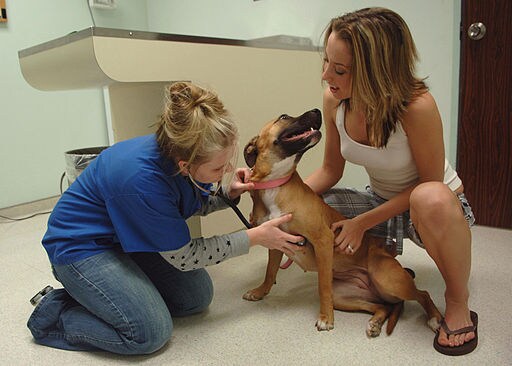You’ve heard the expression “sick as a dog” before. What does that mean in the literal sense when it comes to your beloved sick puppy? Sometimes you may not know. Dog flu, or canine influenza, doesn’t always have symptoms but it can easily spread from dog to dog, especially if left untreated.
“The flu virus is part of a syndrome called CIRD (canine infectious respiratory disease),” says Dr. Richard Goldstein, a veterinarian and the chief medical officer at the Animal Medical Center in New York City. “We know of two strains of flu that are carried by dogs: H3N8, the equine flu, which has been in the dog population since 2004, and H3N2, the Asian flu, which caused a large outbreak in Chicago in 2014.”
What Causes It?
Dogs are like preschoolers when it comes to illness. They don’t shield their cough, they put toys in their mouths, they don’t wash their hands and they’re likely to pick up germs. That’s why dogs are more likely to get flu in warmer months when dog walkers bring dogs to hang out together in parks, go for more walks, and socialize more.

It’s important to know the flu is species-specific: dogs get dog flu and people get people flu. You can’t catch it from your dog and she can’t catch it from you. But dogs can catch it from each other and you can carry the virus on your hands, clothes or a toy, which could transmit it from one dog to another.
What Are the Symptoms?
You may have heard of “kennel cough.” Kennel cough comes from being in close contact with other dogs and there are many causes. Dog flu is the viral cause. Your dog may have the flu if she is coughing, sneezing, loses her appetite or has a fever, less energy, a runny nose or labored breathing.

Sometimes, owners confuse allergies with kennel cough or other viruses. With allergies, dogs tend to be itchier, lick and bite themselves, sneeze and snore. The dog flu is characterized more by coughing and low energy. If your dog is behaving unusually for a few days and you’re not sure why, a visit to a veterinarian is always a good idea.
How Is It Treated?
If your dog does get the flu, it should go away with proper treatment within 10 to 30 days, according to the American Society for the Prevention of Cruelty to Animals (ASPCA). Caring for a dog who has the flu is mostly about support. Keep your dog hydrated and feed him a healthy diet, let him rest and keep him warm and comfortable.
The American Humane Association recommends keeping sick pets in a quiet, secluded area. “If it’s just a cough, do nothing,” says Dr. Goldstein. “Keep your dog indoors in a warm and dry environment, and keep him hydrated.” If his behavior changes or coughing gets worse, see a vet to rule out pneumonia, heart or lung disease.
A veterinarian will treat a dog with antibiotics if there’s a secondary infection or pneumonia, or may prescribe steroids for fever, swelling or pain. In some rare cases, dogs with a severe case of the flu or dogs who develop other complications can be hospitalized so doctors can monitor their condition. If your dog has the flu, keep him away from other dogs if possible. Unfortunately, the dog flu is very contagious, even before any symptoms show up, so it’s not always easy to take preventative measures with other dogs in the family.

“Most house pets, if they get it, will get a cough and they’ll be fine,” says Dr. Goldstein. Complications are more common in shelter dogs, pet stores, dogs in poor environments, highly stressed working dogs or dogs who are already sick. There’s a vaccine for the equine flu, and an Asian flu vaccine should be out soon, according to Dr. Goldstein. If your dog is in contact with many other dogs or in stressful situations, he should get an annual vaccine to keep the odds in his favor. If your dog does get sick, it’s your time to shine as a pet owner and shower him with love and support!
Cara J. Stevens is a freelance writer living in Connecticut with her husband and two children. She has authored several books for children and writes frequently about parenting, hair care, DIY crafts, food and healthy living and you can follow her on Facebook and Twitter.
*This article is for general informational purposes only. It is not intended nor implied to be providing medical advice and is not a substitute for such advice. The reader should always consult a health care provider concerning any medical condition or treatment plan. Neither Care.com nor the author assumes any responsibility or liability with respect to use of any information contained herein.



